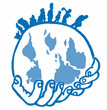Since 1994 (and the coming into force of the TRIPS (Trade Related Intellectual Property Rights) Agreement) there has been a dramatic strengthening of intellectual property (IP) protection with protection for product as well as process, increasing duration of protection and powerful new sanctions to encourage countries to adopt the new standards. (Scherer and Watal (2001) point out that many of today’s developed countries excluded pharmaceutical products from patent protection until quite recently: Germany until 1968; Switzerland until 1977; Italy until 1978; Spain until 1992; Portugal until 1992; Norway until 1992; Finland until 1995, and Iceland until 1997.)
Proponents for increasing IP protection, in particular the research based pharmaceutical manufacturers (RBPM) and their nation-state proxies, argue that it is necessary to support innovation.
Opponents to high levels of IP protection argue that:
- monopoly pricing (under patent protection) renders medicines unaffordable, especially for poor people and low and middle income country (L&MIC) governments; the abuse by RBPMs of their monopoly pricing power (for example with the prices for AIDS drugs determined on the basis of maximising revenues (as when revenue is maximised by higher prices for a smaller number of wealthier families) rather than ensuring access to treatment);
- that funding R&D on the basis of anticipated profit distorts investment in new medicines; manifest in lack of investment in diseases which mainly affect L&MICs and over investment in me-too modifications, disease-mongering therapeutics, and marginal end of life benefits; and
- that much of the profit garnered through monopoly pricing is misused in marketing with consequences in overuse, irrational use and antibiotic resistance.
